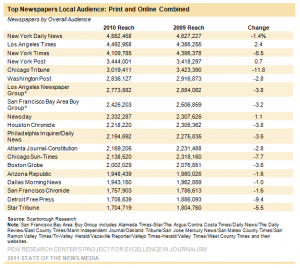 Google announced a new partnership last week with Pandora, the New York Daily News, and several other media companies that could be the death of the paywall model. “Google Consumer Surveys” is a stunningly simple idea. Say you’re surfing the web, and click on a link to a story that would typically be behind a paywall. Rather than pay, you answer a simple marketing question, and as a result are granted access to the article. Google pays the entity five cents for each question answered, which is about $15 per 1,000 pageviews.
Google announced a new partnership last week with Pandora, the New York Daily News, and several other media companies that could be the death of the paywall model. “Google Consumer Surveys” is a stunningly simple idea. Say you’re surfing the web, and click on a link to a story that would typically be behind a paywall. Rather than pay, you answer a simple marketing question, and as a result are granted access to the article. Google pays the entity five cents for each question answered, which is about $15 per 1,000 pageviews.
I’ve long maintained that paywalls are a terrible idea and do nothing but drive potential readers elsewhere. The ROI of putting your content behind a paywall is far less than charging appropriate advertising rates on your site, or other inventive ideas. Don’t believe me? Ask yourself Continue reading

![3240697880_9ff3343c68_m[1]](http://prbreakfastclub.com/wp-content/uploads/2010/12/3240697880_9ff3343c68_m1.jpg)





